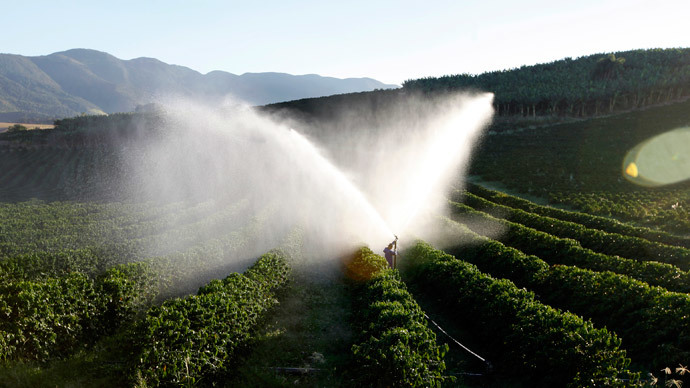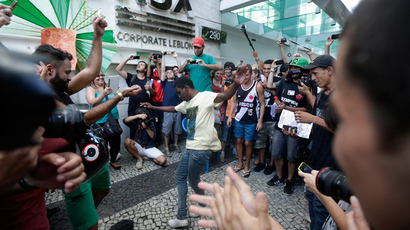Brazil rations water in 140 cities amid worst drought in decades

Over 140 Brazilian cities have been pushed to ration water during the worst drought on record, according to a survey conducted by the country's leading newspaper. Some neighborhoods only receive water once every three days.
Water is being rationed to nearly 6 million people living in a
total of 142 cities across 11 states in Brazil, the world's
leading exporter of soybeans, coffee, orange juice, sugar and
beef. Water supply companies told the Folha de S. Paulo newspaper
that the country's reservoirs, rivers and streams are the driest
they have been in 20 years. A record heat wave could raise energy
prices and damage crops.
Some neighborhoods in the city of Itu in Sao Paulo state (which
accounts for one-quarter of Brazil's population and one-third of
its GDP), only receive water once every three days, for a total
of 13 hours.

Brazil's water utility company Sabesp said on its website that
the Cantareira water system (the largest of the six that provide
water to nearly half of the 20 million people living in the
metropolitan area of Sao Paulo) is at less than 19 percent of its
capacity of 1 trillion liters. The company described the
situation at Cantareira as "critical": the amount of
rain registered in the month to January was the lowest in 84
years. Sabesp said the other five water supply systems in Sao
Paulo's metropolitan area were normal for this time of year,
however.
The PCJ Consorcio water association said the area would have to
see 17 millimeters of rain a day for two months until
Cantareira's water level recovers to 50 percent of its capacity.

Average reservoir levels in the southeast and central-west
regions, which account for up to three-thirds of Brazil's
hydroelectric power generation, fell to 41 percent in late
January.
January was the hottest month on record in parts of the country,
including in Sao Paulo. The heat, plus a severe drought, has
raised concerns over growing water shortages and crop damage.
According to Brazil's national meteorological institute INMET,
Sao Paulo's average maximum daily temperature so far this year
was 31.9 degrees Celsius (89.4 degrees Fahrenheit), a degree
hotter than the previous January record and surpassing February
1984 as the city's hottest month ever.
According to the state meteorological agency in Ceara state, the
northeast of the country is also experiencing its worst drought
in at least 50 years. Hundreds of thousands of cattle have died
from heat exhaustion, and farmers are getting desperate. "I
have never seen a drought like this,” Ulisses de Sousa
Ferraz, an 85-year-old farmer in Pernambuco state, told Reuters,
adding that he has lost 50 cows. “Everything has dried
up."

It's believed that yields from the 2014-15 coffee crop, which
will be collected in the southeastern states of Minas Gerais and
Sao Paulo starting in May, were also probably hurt by dry weather
in January, according to the PROCAFE Foundation. A shortage of
rain could also diminish yields on the current orange crop.
It's hoped that summer rains could finally return by March to
refill reservoirs and prevent serious economic losses.














